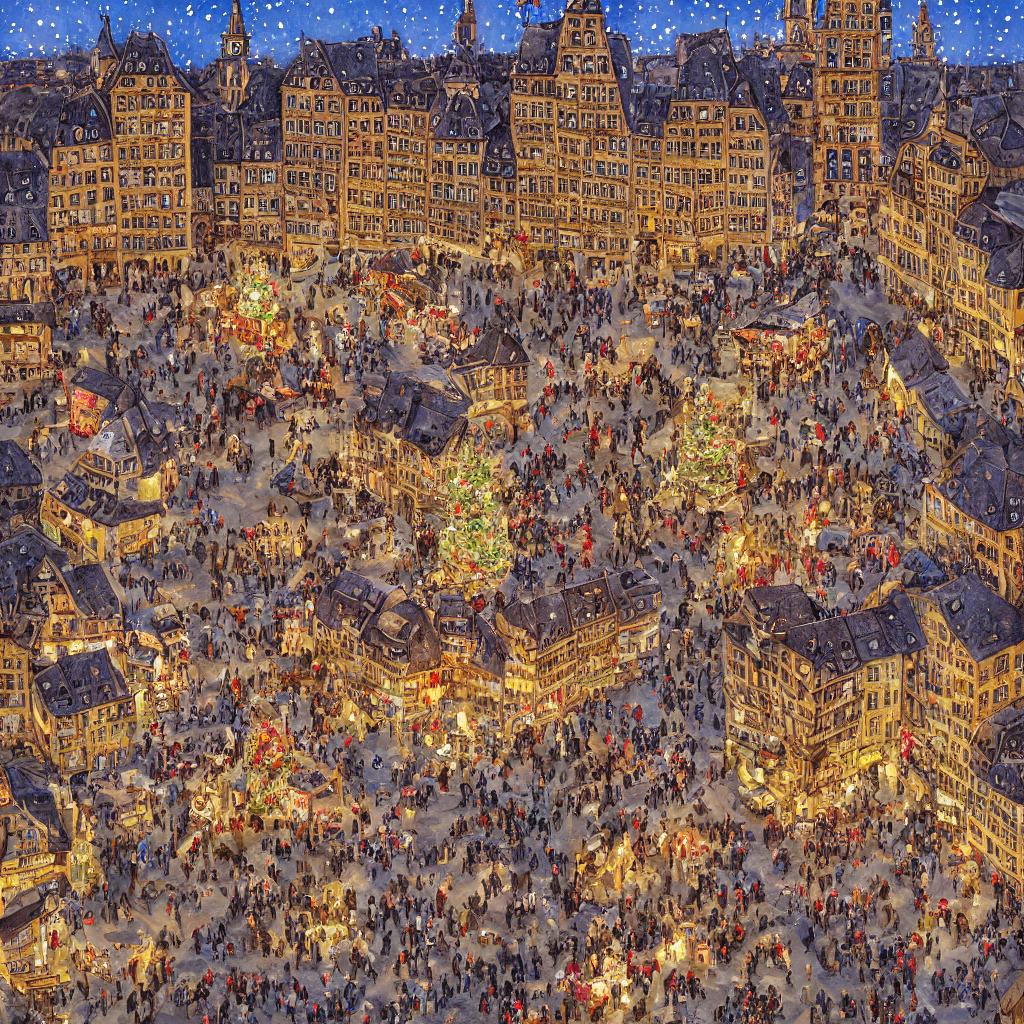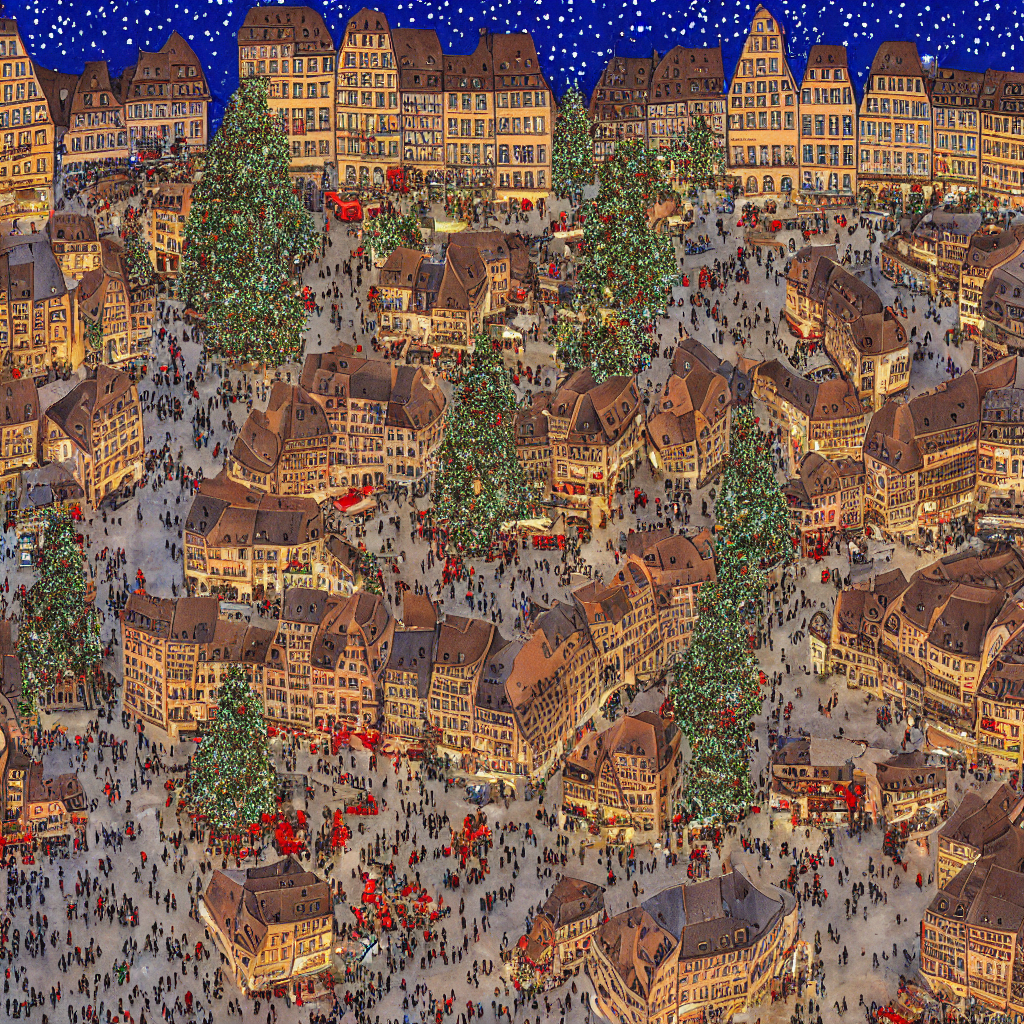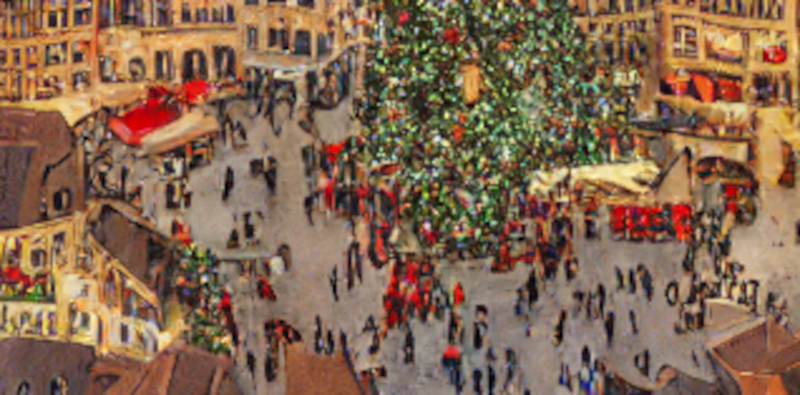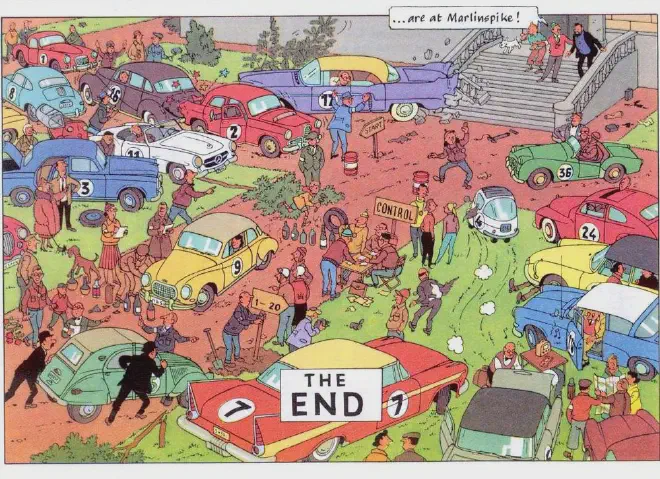AI images are the opposite of Where's Waldo

I recently spent the day walking around the beautiful city of Strasbourg, France. Pairing medieval buildings with a surfeit of holiday markets, it’s known as the “Capital of Christmas”. Curious to see what it was all about while already in Paris, we took the TGV over for the afternoon (as did many other people–the center city was packed with tourists).
When we got home, I did some experimenting with running the AI image generation tool Stable Diffusion locally on my AMD graphics card. In the past this has been a bit of a fool’s errand, but I was pleasantly surprised to find that everything “just worked” to get the webui running with ROCm on my Linux machine.
Having the Christmas markets of Strasbourg fresh on my mind, I played around with generating some drawings of the city that turned out reasonably pleasing at first glance:

 They immediately reminded me of books like *Where's Waldo* from my childhood, where the longer you spend looking, the more you notice. I always loved this kind of thing as a kid, poring over the tiny details and finding little easter eggs or hidden moments lost in everything else.
They immediately reminded me of books like *Where's Waldo* from my childhood, where the longer you spend looking, the more you notice. I always loved this kind of thing as a kid, poring over the tiny details and finding little easter eggs or hidden moments lost in everything else.

I felt compelled to zoom in and look at all of the interesting things going on. It occurred to me that the Waldo-style images–and others that aren’t even intended for the reader to hunt for hidden things, like this image of Jolyon Wagg’s motor rally at Marlinspike from Tintin–actually get more enjoyable and rewarding the closer you look, whereas these generated images get much worse.

Perhaps in the future as these tools become able to generate very large images, the details will not be worse than the zoomed-out version, but clearly there is still room for human-made artwork at some level, at the very least to for someone to insert fun, clever, and exciting things into the work. I’ve seen plenty of impressive output from these models, but so far have not seen much evidence of AIs producing things I’d describe as fun, clever, witty, or delightful!
There's no articles to list here yet.